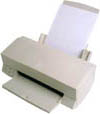The Transitive Verb
Recognize a transitive verb when you find one.
A transitive verb has two characteristics. First, it is an action verb, expressing a doable activity like kick, want, paint, write, eat, clean, etc. Second, it must have a direct object, something or someone who receives the action of the verb.
This is the pattern:
Subject + Action Verb + Direct Object
Read these examples:
Sylvia kicked Juan under the table.
Kicked = transitive verb; Juan = direct object (the person that Sylvia, the subject, kicked).
Joshua wants a smile from Leodine, his beautiful but serious lab partner.
Wants = transitive verb; smile = direct object (the thing that Joshua, the subject, wants).
Cornelius painted the canvas in Jackson Pollock fashion, dribbling bright colors from a heavily soaked brush.
Painted = transitive verb; canvas = direct object (the thing that Cornelius, the subject, painted).
Alicia wrote a love poem on a restaurant napkin.
Wrote = transitive verb; poem = direct object (the thing that Alicia, the subject, wrote).
Antonio will eat lima beans drenched in brown gravy.
Will eat = transitive verb; lima beans = direct object (the things that Antonio, the subject, will eat).
Pinky the poodle cleans the dirty supper dishes with his tongue before Grandma loads the "prewashed" items into the dishwasher.
Cleans, loads = transitive verbs; dishes, items = direct objects (the things that Pinky, the first subject, cleans and Grandma, the second subject, loads).
Important note: An action verb is intransitive when no direct object follows it.
©1997 - 2025 by Robin
L. Simmons
All Rights Reserved.
